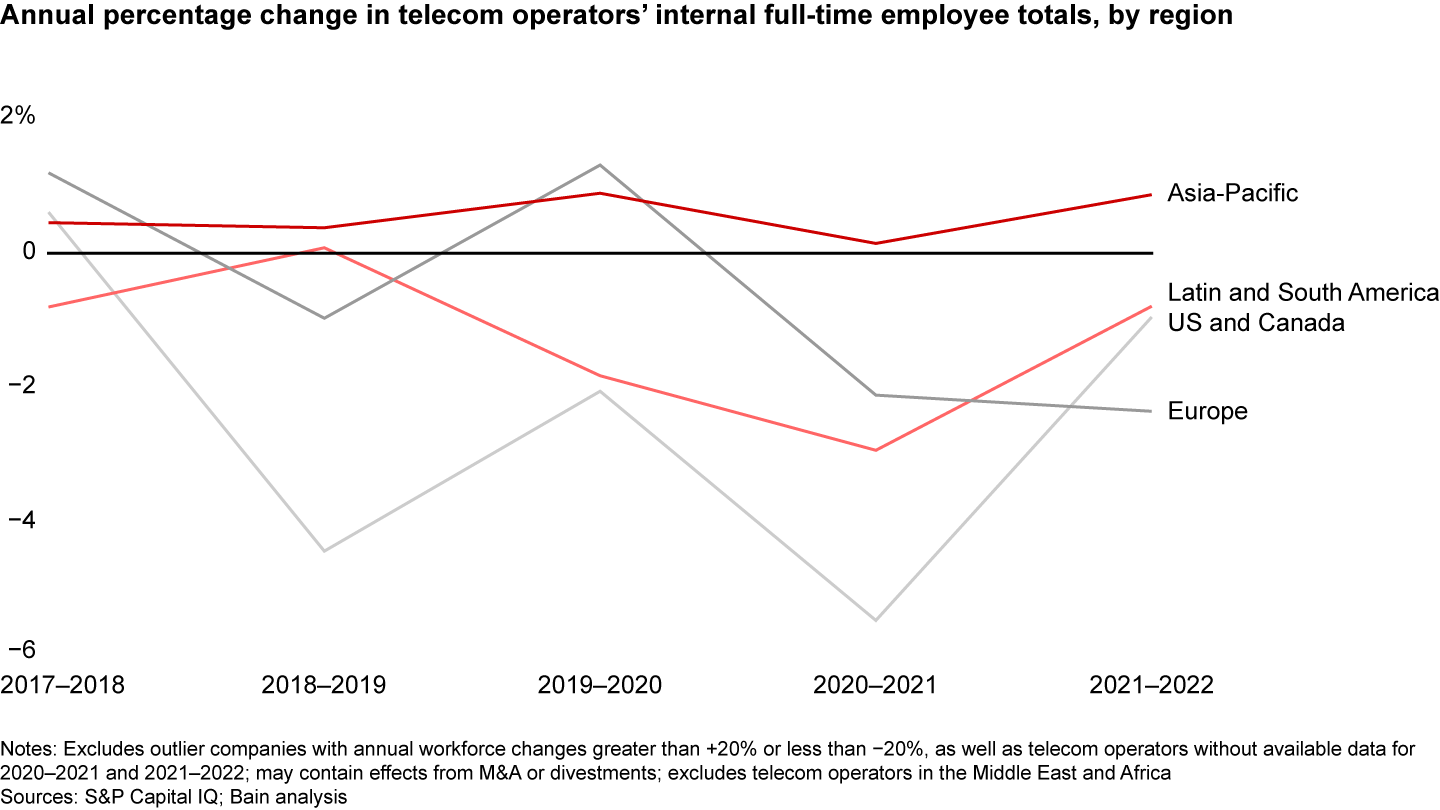Artikel

It’s been standard practice for telecommunications companies to pursue ongoing productivity improvements, adopting new technologies as they become available. So, it’s no surprise that in recent years, telecom workforces have been declining by about 1% to 5% annually across most regions worldwide, including Europe and the Americas. Asia-Pacific is an exception, and there was a small rebound across most regions last year following the Covid-19 downturn (see Figure 1).


Now, as artificial intelligence (AI) reaches an inflection point, it’s poised to unleash step changes in operations and business models that weren’t previously possible. Similar to other sectors, telecommunications companies are abuzz with exciting potential use cases that could transform their industry.
One of the questions is what this will mean for today’s telecom workforces. Recent layoff announcements in markets such as the UK might be an early signal of the accelerated changes to come.
These changes arrive amid a major industry transition already underway. Intensifying revenue and cost challenges have hampered many telcos’ total shareholder return, pushing them to make changes, in some cases radical ones. These challenges are squeezing large, integrated telcos in particular. At the same time, telcos have been increasing their investments in technology, including digitalization, process automation, and adoption of AI tools, as they look to increase productivity and stay ahead of the curve.
As telcos try to capitalize on the latest advances in AI, the most effective leaders will bring strategic workforce management to the fore to ensure that the right mix and supply of talent is available at different points in time. Successful telecom carriers won’t just prioritize and execute exciting AI use cases; they’ll also design transformation programs to strategically deploy their workforce’s capacity freed up by AI—all while investing in talent and new skills where required.
Here are several potential places to start.
- Enable the workforce with AI. Democratizing access for all employees to AI and other advanced technologies is potentially one of the single largest company-specific and society-wide benefits that executive teams can support. Training and upskilling employees in AI can help them enhance productivity in the work they’re doing today, thereby helping secure them an integral place in the telco of the future.
- Redeploy employees. In functions in which automation and productivity gains free up workers’ capacity, they can be redeployed to operations where there have been a shortage of experienced skills or where AI unlocks value creation opportunities, whether through new products and lines of business or enhanced customer service.
- Fill in gaps. AI has created a new capability profile for telcos, some of which will require outside recruitment, outsourcing, or even M&A to attain these required skills.
AI could potentially bring the most significant changes to ways of working since the industrial revolution. Time will tell how much and how quickly things shift, but in any case, the previous trajectory of digitalization and automation will likely be altered. Thinking carefully about strategic workforce planning can help assure that all stakeholders, including employees, can benefit.